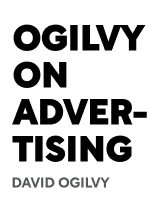

This article is an excerpt from the Shortform book guide to "Ogilvy On Advertising" by David Ogilvy. Shortform has the world's best summaries and analyses of books you should be reading.
Like this article? Sign up for a free trial here .
How do you create a great print ad layout? Are there rules to follow about layout for print ads?
Print ad layout is part of the design of the ad. The layout should make it easy for the reader to see and understand the ad. It’s important that the layout is clean and is not distracting.
Read more about print ad layout and how it works.
Print Ad Layout
The print ad layout is the placement of the above four elements on the page. The goal of a print ad layout is to make it as easy as possible for a reader to understand your ad, not to create something that’s pretty. First, we’ll look at some general information about layout. Then, we’ll look at how it specifically applies to different print media.
General Guidelines
To make your ads as legible as possible follow these steps for a print ad layout:
Tip #1: Don’t set your headlines or ads in all-caps. All-caps are hard to read because without changes in letter height, it’s hard to recognize words, and people tend to read letter by letter, which is slower.
- For example, this ad for ABN bank is very hard to read:
[image] oglivy-abnbank.png
Tip #2: Don’t overlay your headlines on illustrations. This makes them hard to read.
Tip #3: Don’t put periods at the end of your headlines. This will make people stop reading.
Tip #4: Make your text block approximately 40 characters wide. This is how wide newspaper columns are and people find this width easy to read.
Tip #5: Use fonts that people are familiar with, such as Jenson, Baskerville, Caslon, or Century.
Tip #6: Use serif fonts (fonts that have small strokes attached to the end of larger strokes of letters). They’re easier to read because they help the eye distinguish between letters.
Tip #7: Keep your margins consistent. Don’t try to make shapes with the text because it makes the text less legible.
- For example, these ads are hard to read:
[image] oglivy-badtyppography2.png
Tip #8: Set your text in black on a white background. The opposite, white on black, is hard to read. (The only exception is if your ad will be read in a dark place with a single light source, such as a theater, because in this case, white on black is more legible.)
Tip #9: If your copy is long:
- Put a two-line subhead between your headline and the copy. This will encourage the reader to continue on.
- Use drop-caps (the first letter is larger than the rest of the text). This increases readership by approximately 13%.
- Keep the first paragraph shorter than 11 words.
- Include a subheading every two or three inches to create some white space and make the text look more approachable. Subheads should contain enough information that if a reader only reads them and not the copy, the reader will still understand the gist of the story. Additionally, make some of the subheadings questions. These encourage the reader to continue reading.
- Don’t use justified alignment or try to have every column finish at the bottom of the page. Short lines improve readership.
- Emphasize important paragraphs by setting them in italic or bold.
- Use bullets, asterisks, arrows, or marginal marks to make the text look more accessible and therefore increase readership.
- Number lists of facts rather than trying to awkwardly link them together with connectives.
- Use 11-point text (font size 11).
- Include extra line spacing between paragraphs. This increases readership by approximately 12%.
A print ad layout can help create a compelling and effective ad.

———End of Preview———
Like what you just read? Read the rest of the world's best book summary and analysis of David Ogilvy's "Ogilvy On Advertising" at Shortform .
Here's what you'll find in our full Ogilvy On Advertising summary :
- What the "father of advertising" has learned from his decades' of experience
- How to craft easy-to-understand ads that work
- The 6 pioneers of the advertising industry






